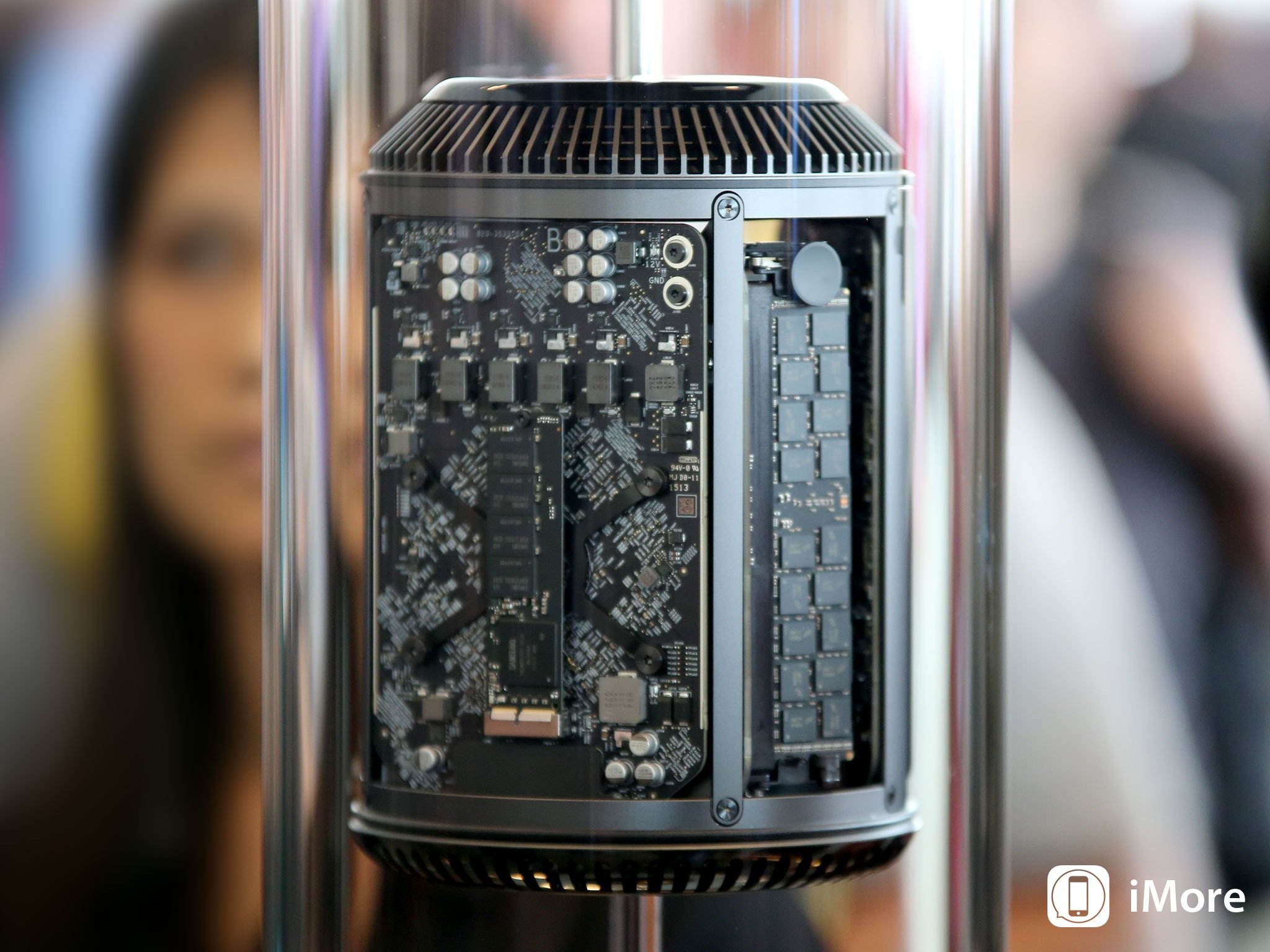The Mac Pro is an object of tech lust, but do you actually need one?

After months of anticipation, Apple began accepting orders for the new Mac Pro this week. Customers who weren't able to get their hands on one right away are waiting until February. It's good to see pent up demand for Apple's highest-performing Mac system, but the question posed in this article's headline remains: do you actually need one? Let's take a look.
First of all, if you have to ask the question, chances are you don't.
I don't mean that as snark. But the Mac Pro's prospective customer base is a very self-selecting lot. The new Mac Pro fits a rather select group of Mac customers' needs. They're not the general consumer, but they do represent a core group of content creators that Apple has long catered to.
Photographers
Aperture, Lightroom, Photoshop and the other digital tools of the photography trade all benefit from the Mac Pro's solid-state architecture and the vast processing power in its CPU and GPUs. And 4K support isn't limited to video editing use only - you can look at high-res digital photographs in spectacular detail on the Mac Pro, as well.
As with video, if you archive a lot of your digital photos, you'll likely have to rely on external storage - but again that's not a big deal, thanks to the copious Thunderbolt 2 ports, as well as four USB 3.0. ports.
Pro musicians and audio engineers
With up to 64 GB of RAM, the Mac Pro can contain twice the amount of memory as any other Mac model. That - and many other under-the-hood features - make it a great choice for people doing pro audio work with their Macs. More memory means being able to load more high-quality virtual instruments and more tracks into memory. The flash-based storage means that stuff loads into memory faster, too, so you spend less time waiting for the Mac to do something and more time actually working.
Video and film editors
The Mac Pro is optimized from the ground up for 4K video performance. The Thunderbolt 2 ports, paired to the twin FirePro GPUs, enable you to run up to three 4K monitors at once. Thunderbolt 2 is also useful for connecting to storage area networks and RAID systems.
Master your iPhone in minutes
iMore offers spot-on advice and guidance from our team of experts, with decades of Apple device experience to lean on. Learn more with iMore!
Internal flash storage is fast, but at least for a video editing station it's pretty sparse too - maxing out at 1 terabyte. Fortunately Promise Technology has jumped on the Thunderbolt 2 bandwagon with RAIDs that can go hellaciously fast; they qualify their systems for use in video production and broadcasting.
Final Cut Pro, Adobe After Effects, Redcine-X Pro, DaVinci Resolve and an increasing number of crucial video editing software applications support OpenCL, or Open Computing Language - a framework for making software take advantage of the parallel processing capabilities not only in multicore CPUs like those used in the Mac Pro, but in the FirePro GPUs it uses, as well. The net result is that those apps run faster and render effects more quickly - real-time effects rendering in 4K is possible on the new Mac Pro.
Scientists and researchers
Number crunching software benefits not only from the multicore CPU design, but also from the massive parallel processing capability of the FirePro graphics cards. Besides being able to render 3D imagery and do real-time video effects, those graphics processing units can also be used for advanced data calculations. That's thanks to OpenCL, the same programming framework used by those video apps.
3D modeling and 3D animation
It's no wonder that Apple recruited Pixar, the Disney studio once owned by Steve Jobs, as an early adopter for the Mac Pro. The same graphics technology that makes the Mac Pro such a home run for video editors also makes it an ideal workstation for 3D modeling and visualization.
Render farms are sometimes used for production rendering of visual effects and CGI, and the Mac Pro supports Thunderbolt Bridge - a networking technique that uses a single Thunderbolt cable instead of an Ethernet or Wi-Fi connection. You can get the benefit of rendering in parallel on multiple Mac Pros with massive network interconnection between each one - 10 gigabits per second, compared to 1 gigabit per second for Gigabit Ethernet.
Others
Graphic designers, illustrators and other content creators will benefit from the Mac Pro the same reasons that others will - the fast CPU, workstation-class GPU and all solid-state architecture.
Who the Mac Pro isn't for
Now that I've talked a bit about who might benefit from the Mac Pro, let's reverse the tables a bit and talk about who the Mac Pro isn't for.
With prices starting at $2,999 and rising up the stratosphere depending on how it's configured, the Mac Pro is the most expensive Mac there is. So if you're on a budget, this is probably not the right system for you.
The Mac Pro, despite its impressive specifications, isn't the ultimate gaming rig, either. FirePro graphics are great, but they don't offer a lot of benefit for gamers compared to the GPUs found in other Macs. If you're looking for a good desktop Mac on which to play games either in OS X or, using Boot Camp, in Windows, you'll get a better bang for your buck with an iMac. The iMac has a solid graphics processing unit and plenty of CPU horsepower.
So is the Mac Pro for you?
I've had a long love affair with tower Mac models back to the blue and white Power Mac G3. I've had a Mac Pro since 2008, and it's still churning away. I use it regularly, and really love it. I got it because it was absolutely the fastest Mac I could get at the time.
These days, though, my usage characteristics have changed. Portability is much more important to me than it used to be. What's more, Apple's hardware has come a long way. This year I migrated to the 15-inch Retina MacBook Pro, and don't regret it for a minute. It's a fantastic performing machine that does everything I throw at it without missing a beat.
So as much as I love the new Mac Pro, admire its design and respect its raw performance potential, I can't justify buying one. Regardless, it's an object of technology lust for me.
Now that I've laid it out for you, is the Mac Pro the right machine for you? Or do you think a different Mac is better suited for your needs? Let me know in the comments.

